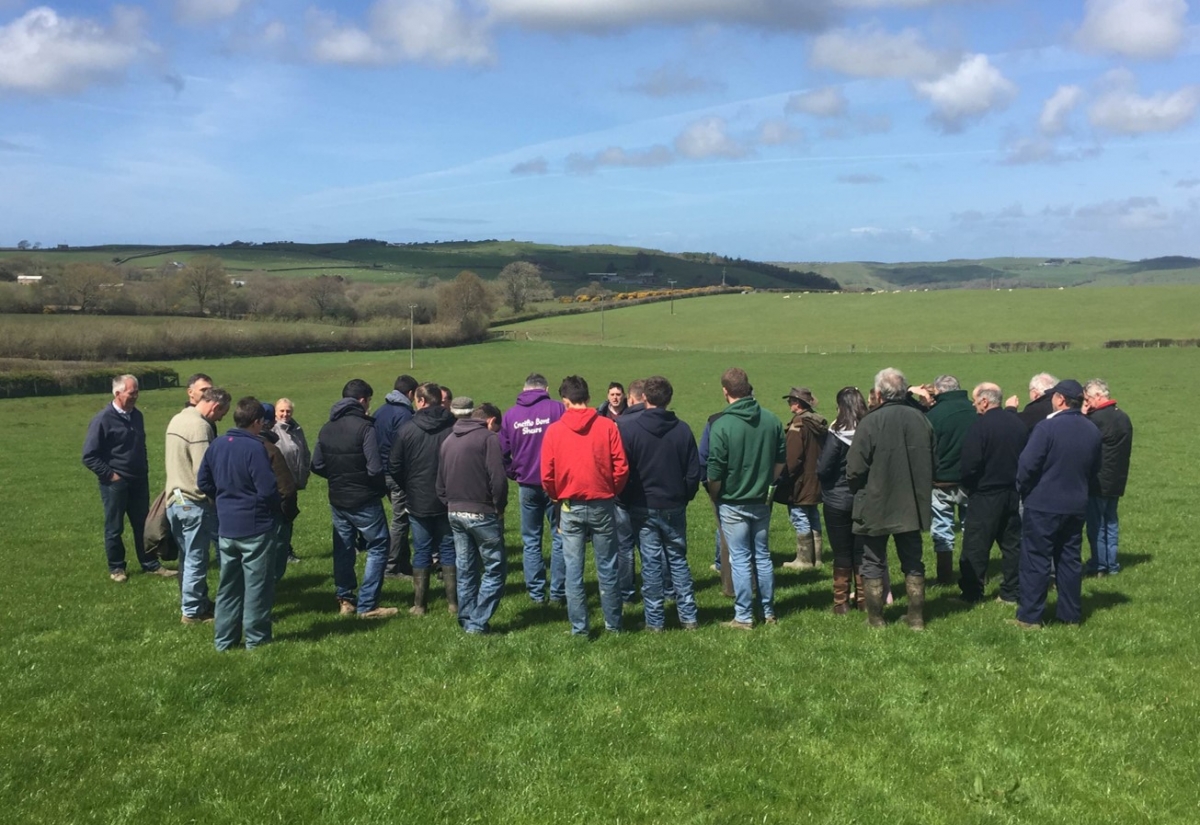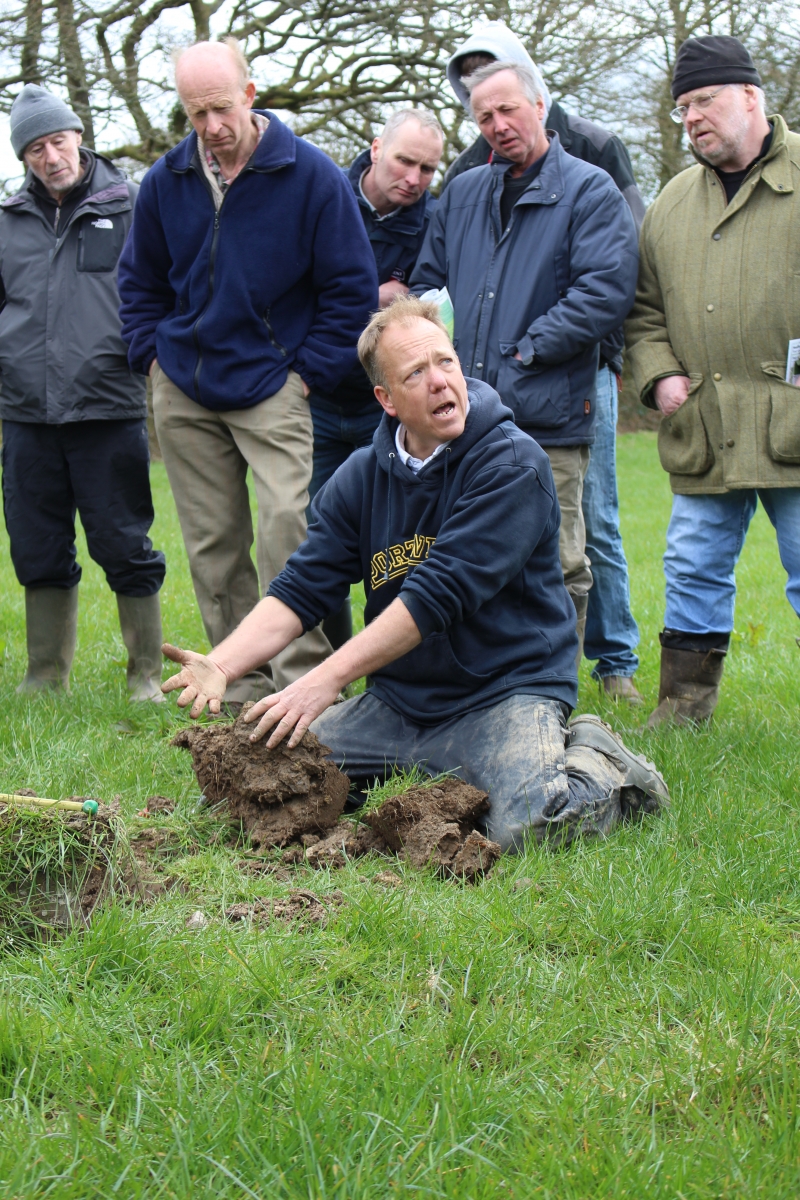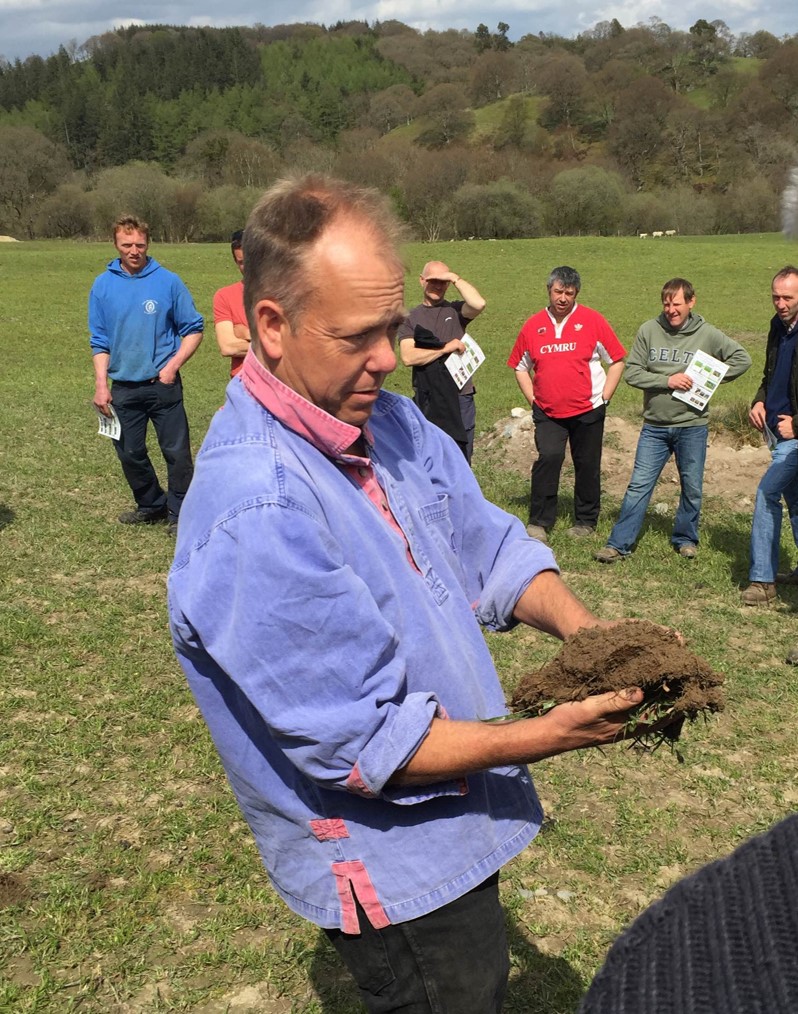 A series of Farming Connect on-farm events this spring are focussing on helping soils and grassland recover after the warmest and wettest winter on record.
A series of Farming Connect on-farm events this spring are focussing on helping soils and grassland recover after the warmest and wettest winter on record.
An additional 476mm (19 inches) more rainfall than usual in Wales since November has led to waterlogged fields, nutrient loss and soil structure damage such as compaction. A decline in sward density has led to weed encroachment, and dead material and disease are affecting silage fields. The warm weather from October to December has also contributed to the issues as grass kept growing but without enough sunlight, so root mass is lower and root depth is shallower than usual because sugar has been taken from roots.

At Coxlake Farm, Robertson Wathen, Narberth, Tim Simons runs a 190-head spring calving dairy herd on his 200-acre grassland farm. He says the warm, wet winter has led to a number of issues this spring.
“The waterlogged ground seems to have opened up the swards,” said Tim. “It’s also delayed turnout and there are some wet areas on the farm, so poaching is definitely an issue.”
At an event at Coxlake, soils and grassland management specialist Chris Duller said soil is the starting point when tackling grassland conditions after a poor winter.
“After the winter we’ve had soil becomes the priority, so dig holes to view the soil structure and check for the severity and depth of damage,” he said. “Look for worm activity, compaction issues and ways to move water down the soil profile or out of the field."
“In most situations soils can recover from slight damage, if they are given a chance. Spotting problems early means they can often be corrected fairly cheaply, but if signs of damage are ignored you are likely to face a reseeding bill in a few years’ time.”

Mr Duller demonstrated how to assess soil structure by breaking up and scoring the soil according to how easily it crumbles. If compaction is identified, the damage can be alleviated by harrowing or using a soil aerator for surface capping, and subsoiling or using a sward lifter for deeper issues. However, ground conditions must be dry enough so that any machinery breaks up compacted soil and doesn’t cause smearing.
Mr Duller also emphasised the importance of checking and maintaining field drainage to speed up the movement of water.
“Soil chemistry is also important, so get soils tested,” he added. “Soils are likely to be low in nitrogen, sulphur and possibly potash due to poaching. There will be lower responses to nitrogen, particularly where phosphate and soil pH is low.”
 Mr Duller advised applying nitrogen little and often to minimise losses and said use of light machinery with correct tyre pressures can help prevent further damage.
Mr Duller advised applying nitrogen little and often to minimise losses and said use of light machinery with correct tyre pressures can help prevent further damage.
Grazing strategies to promote good soil structure include flexibility over which fields are grazed and when. Back fences can be used behind the cows to prevent them returning to grazed areas and field infrastructure should be assessed, possibly moving feeders and troughs and relocating access points.
Farming Connect has produced a factsheet on tackling soil and sward conditions after a wet winter.
